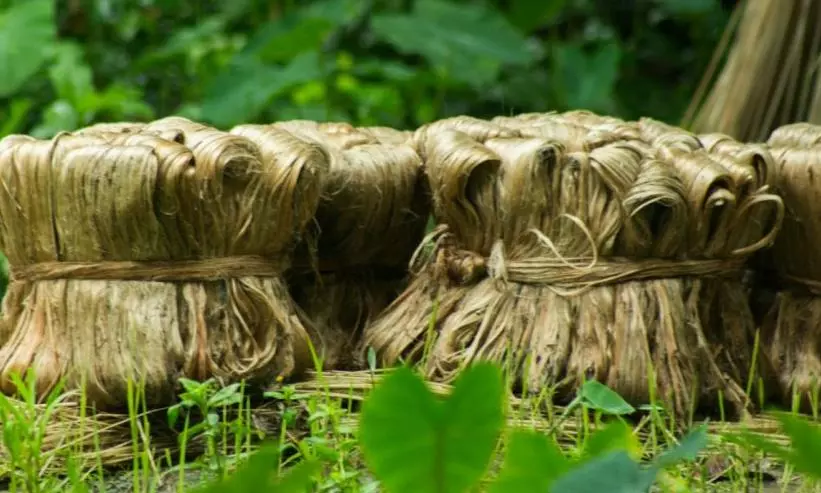
Why India's jute mills are feeling bitter against sugar industry
Jute mills grappling with oversupply and drop in demand are angry with sugar industry for blatantly flouting 20% mandatory order for jute packaging

Indian jute mills are struggling with a problem of plenty but one of their key customers, the sugar industry, continues to play truant. Typically, three fourths of the production of finished goods in the jute industry is absorbed by the government for packaging food grain. The remaining is sold as diversified products (like jute shopping bags) or exported.
So where does the sugar industry come in? Well, there is the Jute Packaging Materials Act of 1987 which mandates the use of jute sacks, manufactured by Indian jute mills, for the packaging of products by other domestic industries. These include food grain, sugar, cement and fertilisers to begin with but now, the compulsory use clause is valid only for food grain and sugar packaging. Over the years, the percentages of mandatory packaging also changed – for food grain it is now back to 100 per cent, whereas for sugar, it has been fixed at 20 per cent in the last official notification issued in November 2022.
Jute mill owners are cut up with the sugar industry since the latter has not complied with this mandatory packaging order yet again this year, leading to a situation of oversupply for the mills.
The sugar industry has shown a marked preference for plastic packaging, since it offers cost advantages. Also, the industry says, jute packaging is not able to fully withstand moist conditions. The jute mills are quick to point out that environmentally, jute is miles ahead of plastic since it is fully degradable.
Oversupply and lower demand
With the sugar industry keeping off, the subsequent demand drop for jute sacks this year has set off a chain of unhappy consequences. Mills are reluctant to buy raw jute, jute farmers are struggling to find buyers and this has meant that prices for these farmers have been pushed down. The upshot is a deep disquiet that has descended on India’s jute belt. Farmers have taken to the streets in many parts of West Bengal, blocking traffic and raising angry slogans.
Until recently, the country’s jute mills – mostly concentrated in the eastern part of India – were struggling to meet the demand for jute sacks that the government annually procured for packaging food grains. Two post COVID years (2020 and 2021) witnessed almost nil raw jute production and the production of finished goods therefore stagnated at about 12-12.5 lakh tonnes, Raghavendra Gupta, Chairman of the Indian Jute Mills Association (IJMA). told The Federal. But raw jute production is now back.
“This year, the industry is capable of making 14 lakh tonnes of finished goods. But we find that the market cannot absorb all the production and non-compliance by the sugar industry has certainly been a sore point,” said Gupta. The government is expected to procure about 10 lakh tonnes of finished goods this year and another 2.5 lakh tonnes will be used up in exports plus other domestic market sales. The jute industry will thus be left with about 1.5 lakh tonnes of finished goods with no end user in sight.
One mill owner said the demand supply mismatch has kept his facility shut for 2-3 days a week of late; it was operating six days a week last quarter. And Gupta of IJMA said that due to the sugar industry’s non-compliance, jute products’ production has been cut back by about a fourth over the last month-and-a-half and there has been a commensurate reduction in the number of workers employed by jute mills. “There has been a reduction of 40,000 man days,” he said.
Food grain packaging is also down “slightly”, he said, because of a dip in wheat procurement in the last two seasons. Due to the Russia-Ukraine war, wheat prices have overtaken the minimum support price (MSP) fixed by the government, and wheat farmers are selling more quantities to private traders rather than the government.
Outpriced by Bangladesh
Not only is the demand weaker in the domestic market for finished jute products, the jute industry has also been “outpriced” even in the domestic open market because of cheaper imports from Nepal and Bangladesh. And, “exports are suffering because of the slowdown in the economies of Europe and America,” the IJMA said in a letter to Textiles Minister Piyush Goyal last month.
The association sought a minimum floor price for imports of jute products from these two countries. As for export revenues, ratings agency CRISIL had said in a note earlier that the jute industry is set to see revenue fall 5-6 per cent this fiscal because of lower exports, marking the second consecutive year of decline.
“Exports, which form a third of the sector’s revenue of ₹12,000 crore, are seen 15 per cent lower this fiscal, after falling 8 per cent last fiscal as overseas channel partners continue to destock amid slowdown worries in the US and Europe (key markets accounting for over 60 per cent of the total exports from India). The end-use of jute in these markets is largely discretionary,” CRISIL had said.
Sugar compliance
Meanwhile, the IJMA has also sought a government directive to sugar mills to comply with the mandatory 20 per cent packaging order (20 per cent of total sugar production), pointing out that sugar mills have been “blatantly” violating these packaging norms.
“Industry has ample capacity and also bags with BIS specifications exclusively for packaging 50 kg of sugar. In times when procurement by FCI…is volatile, the orders of the sugar industry can fuel demand for both, finished goods as well as raw jute,” the association said in its letter to the minister.

